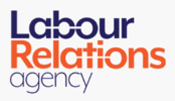Managing employee use of social media
Social media and inappropriate conduct of employees
Careless use of social media by individual employees can have a negative effect on the organisation as a whole. As an employer, you should be aware of and look out for the different issues that could arise.
Negative staff comments on social media
An employee posting negative comments on social media about other employees, their employer, or customers could have a potentially devastating effect on an organisation.
Some examples of negative comments include personal opinions about the organisation, another employee, or a customer.
Bringing the organisation into disrepute on social media
A much wider audience will be privy to any inappropriate conduct that occurs online. For example, a video uploaded to YouTube could have thousands of views within a short time.
Your response to such inappropriate conduct will be dependent on the extent it can be linked to your business and to what extent it could or potentially could damage your reputation or business.
When deciding whether statements made on social media are defamatory, you should focus on and establish how a typical reader of social media postings would interpret them. When deciding how a social media post would be interpreted, you should keep in mind how such posts were made and read. Consider how people view social media content by scrolling quickly, rarely pausing to reflect or ponder the meaning of some statements. In short, as an employer, you should bear context in mind and not overreact to social media content. However, common sense is necessary here, and if you feel an issue is serious enough to take action, you should seek legal advice immediately.
Bullying and harassment on social media
You also need to be aware of the potential for social media to be used for cyberbullying and harassment purposes.
Bullying and harassment can be defined as 'unwanted conduct which has the purpose or effect of violating an individual's dignity or creating an intimidating, hostile, degrading, humiliating or offensive environment'.
Online bullying and harassment can include:
- social exclusion - limiting interaction to cliques/groups
- posting offensive or threatening comments
- posting photographs or videos
Online bullying may breach your bullying/harassment policy and should be treated in the same way as if it had occurred in the workplace. If the harassment is related to a particular characteristic of the individual, eg, race, gender, age, disability, etc, it is prohibited under anti-discrimination legislation.
Read more on bullying and harassment.
Breach of confidentiality on social media
The duty to preserve confidentiality is part of the duty of fidelity, which all employees owe to their employer. You may also have confidentiality clauses that set out clear rules about the use of company/employee information.
Unauthorised disclosure of company information via social media sites could include details relating to:
- profit/loss accounts
- potential redundancies
- employee personal information
- client details
- details of grievances/internal complaints
- trade secrets
Another issue that may arise is employee behaviour online that is incompatible with their job role. For examples of employment case law on this issue and each of the other areas, read the Labour Relations Agency (LRA) guidance on social media and the employment relationship.
- LRA Workplace Information Service03300 555 300
